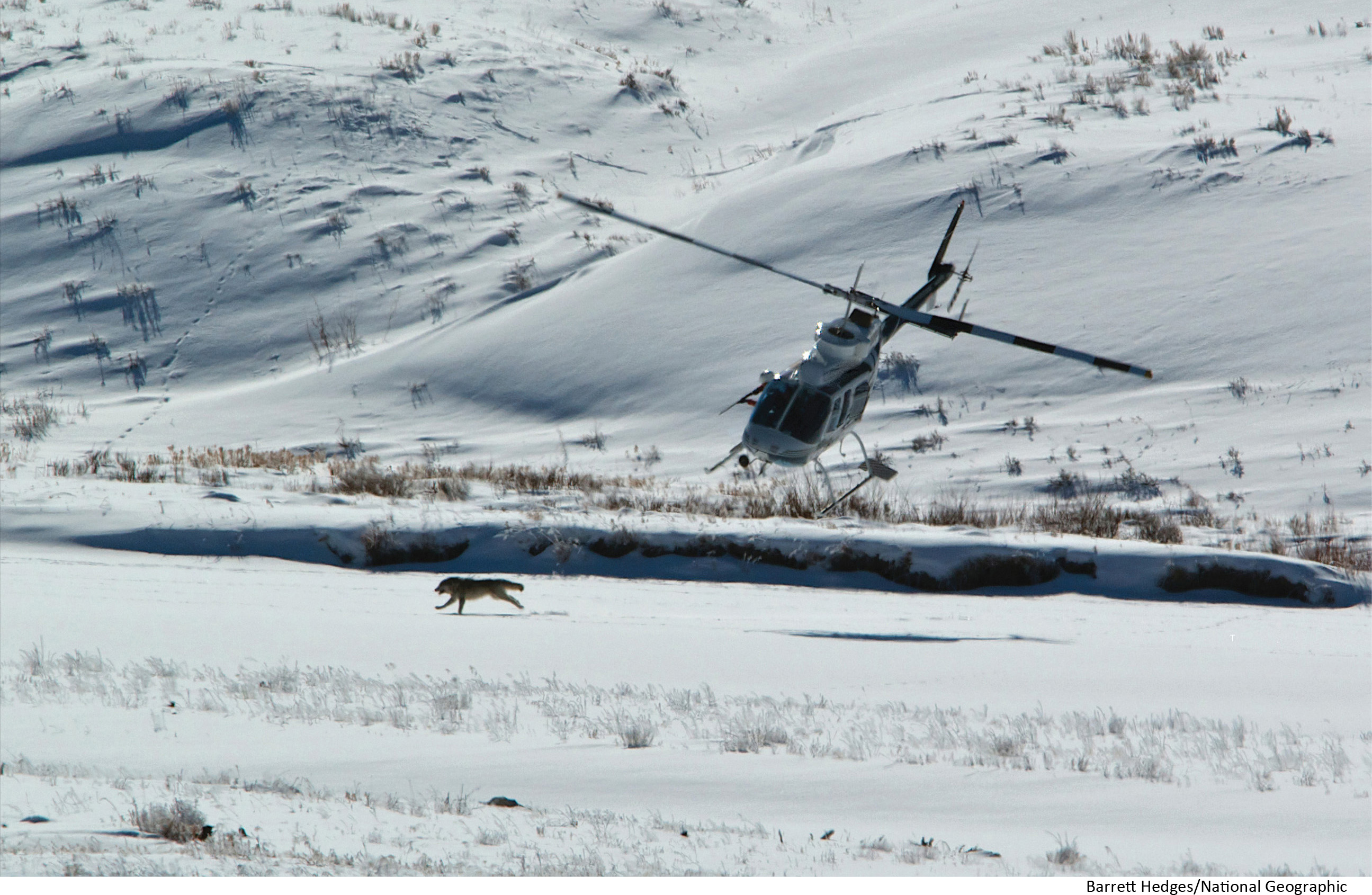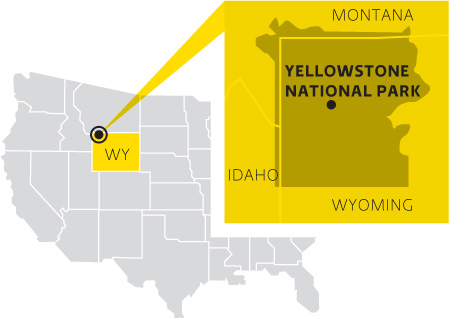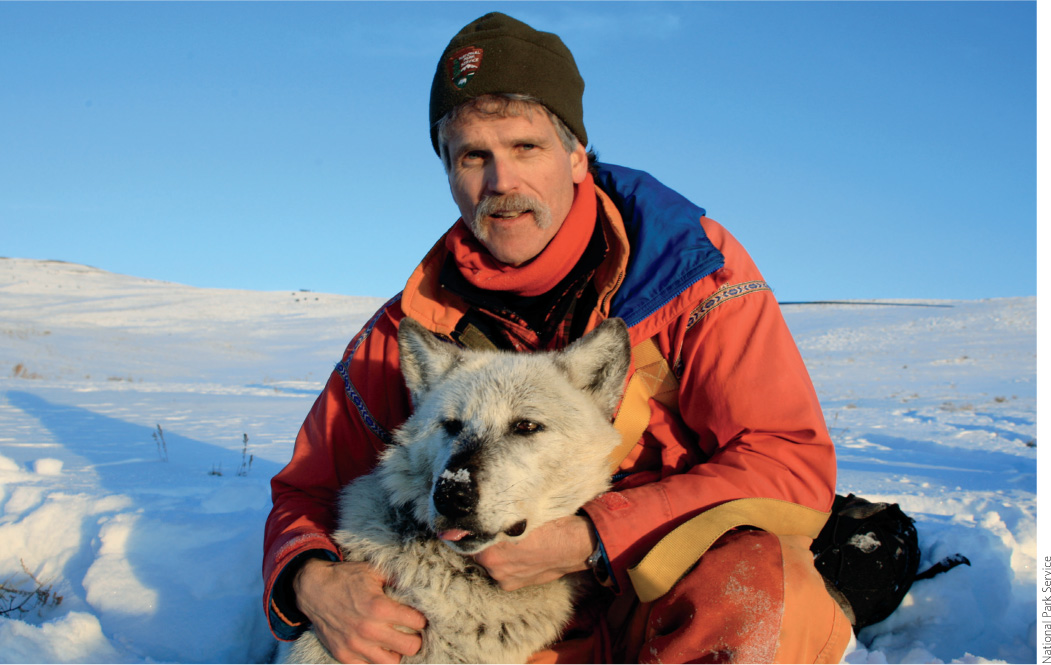Chapter Introduction
CHAPTER 9
POPULATION ECOLOGY
THE WOLF WATCHERS
Endangered gray wolves return to the American West

CORE MESSAGE
Ecologists study populations to better understand what makes them survive and thrive. The size and distribution of populations in an ecosystem is influenced by a variety of factors, such as the availability of resources and the presence of other species, like predators. Species vary in their ability to adapt to changes in their environment, but many species are facing environmental disturbances that are threatening their populations. Determining the factors that affect a given population is an important part of managing it, especially for populations that are endangered.
AFTER READING THIS CHAPTER, YOU SHOULD BE ABLE TO ANSWER THE FOLLOWING GUIDING QUESTIONS
At least a half a dozen times each winter, Doug Smith climbs into a helicopter, gun in tow, and hunts wolves (Canis lupus) in Yellowstone National Park. He’s not looking to kill them—just to put them to sleep for a little while so that he can outfit them with radio collars to track the sizes of their packs, what they eat, and where they go over the course of the following year. Smith, a biologist, spends about 200 hours per year on these “hunting” expeditions, which are part of the Yellowstone Gray Wolf Restoration Project that he leads. The project has been responsible for reintroducing a total of 41 wolves to Yellowstone since 1995, after their disappearance as a result of predator control programs implemented by the U.S. government in the early 20th century.
Sometimes, though, things go awry on Smith’s radio collar missions. For instance, the tranquilizer dart doesn’t fully sedate big wolves—some of which can reach 80 kilograms (175 pounds). Smith is forced to approach the animals while they’re still awake. “I have to grab them on the scruff of the neck and manhandle them until I get the collar on,” he explains. “They’re typically not dangerous then—they’ve had enough drug to be kind of out of it—but they’re still able to walk around. It’s a wild experience.” Sometimes the wolves—who are typically frightened of the helicopter—try to attack it while it’s hovering with the doors open a few feet above the ground. “I’ve had two females turn and run at the helicopter, teeth gnashing, jumping up trying to get me,” Smith recalls. “I’m hovering above it, going back and forth, and I can’t get a shot because all I’m seeing is face and teeth.” Despite these adventures, Smith says a wolf has never actually bitten him—and he has tranquilized and collared more than 300 of them.

KEY CONCEPT 9.1
Ecologists study populations to better understand what makes them thrive, decline, or become overpopulated in an effort to manage them and the other populations they impact.
Ecologists monitor populations of organisms in ecosystems around the world for a variety of reasons, whether to protect endangered species, to manage economically valuable species such as commercial fisheries or timber, or to control pests. In Yellowstone, Smith and others monitor wolf populations. Elk (Cervus elaphus) populations, a popular game species, are also closely monitored, as are aspen, willow, and cottonwood trees, the most important winter food for elk. In some cases, elk numbers and aspen growth are closely tied to the size of the wolf population—but not in all areas. Other factors play a role in the sizes of these populations.
population
All the individuals of a species that live in the same geographic area and are able to interact and interbreed.
Understanding how any population interacts with biotic and abiotic forces in its environment, through programs like the Wolf Restoration Project, is key to preventing species from disappearing from their ecosystem forever. That’s because many factors influence the livelihood of a species and its ability to survive and reproduce. In the early 20th century, humans not only threatened wolves by hunting them, they also destroyed the animals’ natural habitat (and that of their prey) when they cut down forests to build farms and ranches. They starved the animals by hunting elk, deer, and bison, wolves’ usual sources of food. At the time, people didn’t think that this combination of changes would very nearly cause wolves to go extinct or result in exploding elk and deer populations. But now that scientists like Smith have spent years watching how the animals live, they have a much better understanding of what needs to be done to keep them alive.
